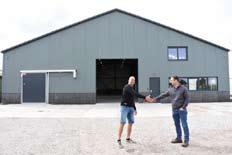
7 minute read
Dutch Cutting Supplier Ready to Get Started
Dutch cutting supplier rea y to get starte with new facility
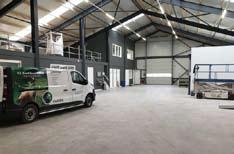
Advertisement
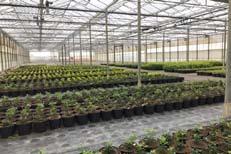
D.J. Hendriksen & Zn BV has had a brand new facility built. The existing building, which father Hendriksen built in 1990, was in need of replacement; everything was outdated and especially the increasing amounts of cuttings, as well as the staff, were lacking sufficient space. Thanks to the builders and suppliers, led by Gert Roseboom of Roseboom Bouwkundig Adviesbureau, an important step for further growth has now been made.
Roots
Hendriksen’s roots go back to the early 1970s, when father Hendriksen got a bright idea. Simon Hendriksen, son and current owner of the company, relates. “He was a hippie and wanted to go to India because of the opium there. But the trip still had to be financed and so he thought that he could provide growers with cuttings. He had a good place where he could collect cuttings for free and knew a handful of growers who wanted to pay him for that. And that’s how it started; by bicycle to the growers, then his own company - the initial plan soon was shelved - with his own cutting production and warehouse.”
The new building is, besides being modern and fully equipped, above all a lot more spacious. “We have grown considerably in recent years. This means that we are increasingly processing cuttings for our customers. But we had reached the maximum capacity. The new warehouse is much larger, the driveway is more spacious, trucks can drive in and out much easier and we can store all things much better. If a load with, say, one and a half million cuttings arrives, we will be finished with it in 2 or 3 hours. That used to be double. The cold stores - installed by Van der Laan - are also more spacious and modern, and the climate in the warehouse is also better; we can keep it nice and cool. Moreover, things are now more organized, so you make fewer mistakes. Finally, we now have a modern office that is fully equipped.”
Simon joined the company in 2003. “At that time we were still fully engaged in the production and trade of winter cuttings. But I had just started when this market collapsed. Within two years, we no longer could sell even a single winter cutting. We had to look for other crops, in plants such as boxwood and lavender, and we also had to look for a (literally) better climate. That’s how we ended up in Africa. We had a look in South Africa, we looked in Ethiopia, but in the end Uganda seemed the best to us. The climate there is good and stable, and it has greatly increased our options, as well as those of all other players in our market. Previously, for example, we were able to supply lavender in August and September. The customer then had to take cuttings, keep them in dormant state and hope that there would be some left over in spring. An average of 30% of cuttings gets lost, with hibernation an additional 10-20%. Now we supply these plants all year round, we can start in week 1, the plant does not have to hibernate, the cutting is much stronger and ultimately 99% is good.”
From pile to plinth
Gert Roseboom from Roseboom Bouwkundig Adviesbureau managed the construction, “from pile to plinth”. “It is important to have a group that can
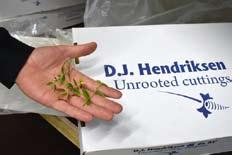

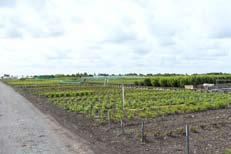
take care of your things and that has your trust. It is a lot of additional work, and daily business continues as usual. But construction went smoothly and the budget was realistic. In the end we were maybe just one percent off from the original budget; the central heating, the gas connection, that all turned out to be a lot more expensive than expected. In the end, we also went for a heat pump and in the future perhaps for solar panels on the roof. Finally, I must admit, I made a bit of a mistake in the costs of the cold storage.”
Since Hendriksen started in Uganda in 2010, the company has continued to grow every year. About 60-70% of the cuttings are primarily for the Dutch market, because the first customers are often companies that root the cutting. The rest is mostly for customers in Germany, Japan and China, and a little bit for the US. “It is difficult to get a foothold there, but not a must in my opinion. If that would become more it would be great, but it is not necessary. In any case, we can move forward again for the time being.”

Corona cause a 10% loss of turnover espite a strong recovery
The average price of flowers was 2.8% lower, houseplants 3.6% higher and garden plants 16.8% higher. The volume decreased by 11.7%. The first half of the year saw a strong recovery. High prices led to good sales, while there was still lagging supply.
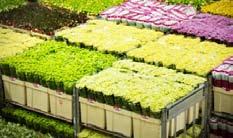
Solid financial challenge
David van Mechelen, CFO Royal FloraHolland said, “For the sector, the first half of 2020 was very difficult. The losses for growers were sometimes very large. The Noodfonds Sierteelt offered a safety net, but many growers have a loss of turnover of up to 30% for their own Because there was much less supply and because of the shift from clock to direct, the number of carts with flowers and plants was much less than last year, which was partly due to a different composition of the supply that was and still is disrupted by the corona crisis, which means that the revenues from logistics services for Royal FloraHolland are much lower and we are making significant losses this year, while there is a considerable financial challenge, while at the same time the crisis shows that our strategy is the right one. We will therefore accelerate its implementation wherever possible and we are confident that we will succeed. “
Cut flower sales fell by 14% in the

first half of the year. The number of stems decreased by 12% and the price by 4%. This has been driven by the top of the corona crisis. In the week 12-25 period, cut flower sales decreased by 24%, of which 20% were number of stems and 5% lower in price.
The supply of cut flowers decreased by 12%. The reasons for this decrease are limited supply from Kenya and Israel and supply regulation in the first weeks of the corona crisis. Growers have also sometimes suspended cultivation. The loss of supply from Kenya and Israel had an impact on the clock share in trade. The production from those countries is actually sold on the clock.
The rose remains the leader as the most popular flower with a turnover of 327 million euros in the first six months. The tulip is a close second with a turnover of more than 197 million euros. The total number of cut flowers sold via Royal FloraHolland was 5.2 billion euros, a decrease of 12% compared to the first six months of 2019.
Houseplants
In houseplants, turnover decreased by 7.1%, the price compensated for the decrease in volume by more than 10%. In the period week 12 - 25 the turnover decreased by 14%, the number of pieces was 18% less and the price was 5% higher compared to last year. Within the group of houseplants, the Phalaenopsis (orchid) is at the top in terms of both turnover and number of pieces. Sales decreased by 10% during the entire first half of the year, and even declined by 20% during the peak of the corona crisis. Anthurium stands out in the top 5 turnover with a growth of 1.8%, despite the corona crisis. 80% of all houseplants are sold via direct transactions and the other 20% via the clock.
Garden plants
The garden plant season has turned out very well despite corona. The first half of the year ended with a turnover increase of 8.8%. The supply fell by almost 7%, but the good pricing (+16.8%) more than made up for the loss. In total, nearly 206 million garden plants were sold. Lavender tops the turnover rankings by almost 20 million euros. This is more than 20% more than last year.











